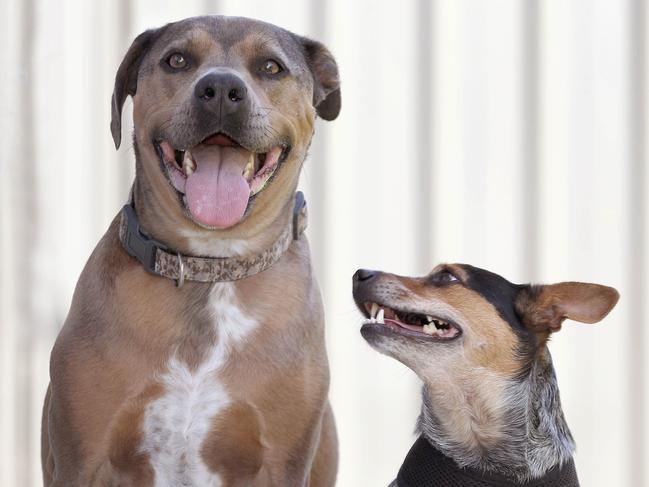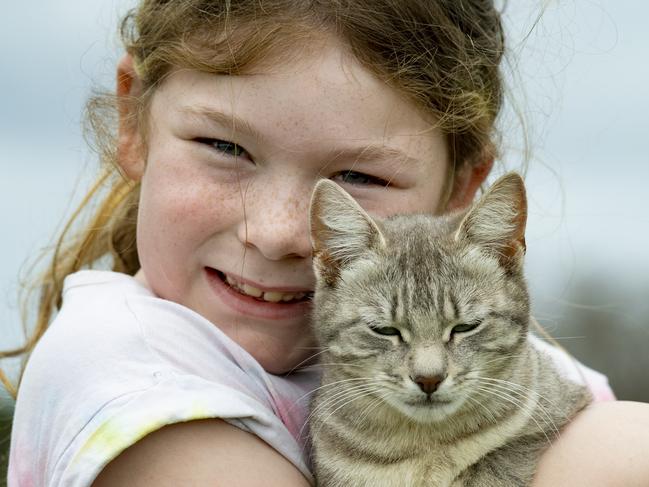Pet tips: What your dog or cat is really trying to tell you
When it comes to our pets, actions speak louder than words. But that doesn’t mean they’re not trying to tell us something. Here’s how to understand, and obey.
Home
Don't miss out on the headlines from Home. Followed categories will be added to My News.
*Brought to you in partnership with Australian Seniors*
When it comes to our pets, actions speak louder than words.
And understanding their behaviour and body language goes a long way in helping them thrive, according to behaviour vet Dr Grace Thurtell.
Describing her role as a psychiatrist of the animal world, Dr Thurtell addresses mental health issues in pets.
“We focus on helping pets be happier, less stressed and able to cope with life better,” she says.
The two most common issues Dr Thurtell deals with at Sydney Animal Behaviour Service are separation anxiety and fear aggression.

“Separation distress (usually in dogs, not cats) occurs when they’re left home alone,” she says. “Dogs are a social animal and some don’t cope well with being left alone. They can bark, howl, destroy things in the home.
“It’s a panic disorder, similar to what we see in people.”
Indeed, the Fur Salon’s Anneke van den Broek says dogs that appear anxious to their owners are “just like children at drop-off – most of them settle very, very quickly”.
On the other hand, Dr Thurtell says fear aggression does come “from wanting people to go away”.
“Fear aggression towards unfamiliar people or dogs happens when dogs perceive threats in individuals that aren’t really that threatening,” Dr Thurtell says.
“We try to address the underlying reason behind the behaviour and reduce anxiety and fear so they don’t react so extremely.”

DOES YOUR DOG OR CAT UNDERSTAND YOU?
So do our pets understand us?
“Dogs and cats are very intelligent creatures and dogs, in particular, do get very good at adapting to us,” Dr Thurtell says.
“If we’re consistent in our interactions and how we tell them to do things, they can easily learn different cues and what they mean.
“Sometimes we’re not as good at reading cats because they’re subtler; the way their tails flick or move, their ear position, their eyes and whole-body posture can reveal how tense they are.”
Consistency is key, Dr Thurtell says.
“Pets can understand cues, routines and what to expect. They can certainly pick up on our emotions. If we’re stressed or upset, they will pick up on that. With domestication, we have bred pets to do better and live in harmony with us.
“My dog knows how to ring a bell at my front door to tell me he needs to go to the toilet. If he’s feeling cheeky, he might ring it for fun because he wants to go outside. Because it gets him what he wants.”
Pets can also be intuitive.
“Our pets can detect when we’re not ourselves, we’re behaving differently or our emotions have changed.
“They can be quite affectionate or cuddly and come lie with you if you’re not well. But again, some pets don’t change at all.”

WORDS OF WARNING
Owners should be careful not to humanise their pet too much, Dr Thurtell says.
“For instance, if a dog wees inside when they’re home alone, and your response is, ‘It’s payback, he’s getting revenge on me for leaving him at home,’ it’s not true. It’s definitely not what they’re doing.
“You might think your dog looks ‘guilty’ but it’s more about them picking up on your tone of voice and body language because you’re obviously upset they have (peed) in the house. So they’re cowering down, trying to appease you so they don’t get into more trouble.”
Dr Tim Hopkins, emergency veterinarian at Sydney’s Small Animal Specialist Hospital (SASH), says we also need to be aware of behaviours that may indicate an underlying medical problem.
“Some cases we commonly see in our emergency department, that have been assumed as behavioural by pet owners, is a cat or dog suddenly urinating or soiling inappropriately around the house,” he says.
“Cats often have a physical condition called FLUTD (feline lower urinary tract disease), which affects the bladder and urethra of cats and they’re compelled to urinate in inappropriate places.

“Some dogs have seizure disorders where the seizure goes unwitnessed but they leave behind urine or excrement. Same thing can happen in dogs with cognitive decline. Owners assume they have become ‘un-housetrained’,” Dr Hopkins says.
Another common issue he sees is dogs being euthanised for aggression.
“Formerly well-behaved dogs who become aggressive could be due to pain, so their response to being touched or picked up is pain, fear and aggression,” he says.
“Similarly, bad behaviour on walks can be due to neck pain.”
To rule out a physical ailment over a behavioural or psychological issue, take your pet to the vet if their behaviour suddenly changes.
WHAT YOUR DOG OR CAT IS TRYING TO TELL YOU
Behaviour vet Dr Grace Thurtell’s top pet communication telltales.
Vocalisation
Cats have learned meowing at us usually gets them what they want – food or to be let out. They don’t meow at each other to communicate.
Dogs can bark at you if they want food or to be let out to go to the toilet.
Proximity
Pets that want to spend time with you will be close to you. If you invite them by calling them to come, it gives them a choice. If they come, it means they want interaction.
Rubbing and nudging
Cats rub up against us if they want pats, scratches or affection. They will keep clear of us if they don’t.
Dogs will approach you for pats and interaction. Some will nudge, lick or put a paw up on you if they want interaction.

The four Fs
Fight and flight: Most recognise the fight or flight response but there are more subtle forms. Ducking away from an outreached hand means “I don’t want to be touched”.
Freeze: Some dogs and cats freeze in stressful situations. Sometimes we miss the ‘stillness’ as a warning sign that they’re scared before they try to run away or become aggressive.
Fiddle: Normal behaviours done out of context. Licking lips when they haven’t eaten or drunk anything, yawning or full body stretching when they haven’t just woken, excessive grooming or scratching like they have fleas but they don’t – these are all signs your pet is getting stressed.
More tips at Australian Seniors
More Coverage
Originally published as Pet tips: What your dog or cat is really trying to tell you




